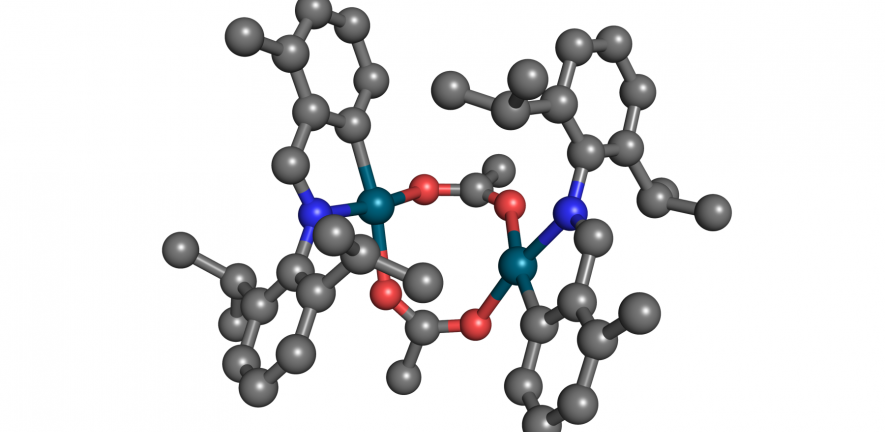
Research is bringing closer the conversion of simple organic molecules into drugs, plastics or potential new fuels in a single step.
Research is bringing closer the conversion of simple organic molecules into drugs, plastics or potential new fuels in a single step.
We’ve focused on a new way of catalysing reactions that can theoretically work on any starting material, transiently making it reactive enough to bind to any other starting material in a single step.
Dr Matthew Gaunt
The hydrocarbons found in crude oil and plants are the raw materials from which we synthesise vitally important products such as drugs and plastics. But the steps needed to convert the starting materials into functional commodities for further processing can be complicated and costly. The reason: the carbon–hydrogen chemical bond that needs to be broken during the synthetic process is one of the strongest bonds known. Chemists led by Dr Matthew Gaunt are devising new techniques to achieve the same synthetic results in a single step.
Catalytic converters
At the cornerstone of synthetic chemistry is the need for molecules to have reactive ‘handles’ to stick them together. To break the carbon–hydrogen bond and enable it to bind to another molecule, the conventional route has been to convert the starting material into a series of reactive intermediates.
‘We want to get away from having to synthesise molecules in this way, which can be time-consuming and creates waste products,’ says Dr Gaunt. ‘Instead, we’ve focused on a new way of catalysing reactions that can theoretically work on any starting material, transiently making it reactive enough to bind to any other starting material in a single step.’
The technique – called metal-catalysed carbon–hydrogen bond functionalisation – is based on the ability of certain metals to ‘muscle in’ between the carbon and hydrogen and become the reactive handle needed to join the starting materials together. Importantly, the metal is released after it has linked two molecules, so that it can go and find more molecules to join together. This means that only a small amount of metal catalyst is needed to generate a large quantity of high-value product.
The work has focused on joining a range of simple hydrocarbons together and identifying the best metal catalyst for the reaction. The aim is to convert simple molecules into complex molecules, for example new medicines or biologically interesting complex natural products. However, one of the most ambitious reactions would be to convert methane into methanol. ‘Nature and expensive chemical reactions can do this; imagine what a breakthrough it would be if we could perform this cheaply in a few minutes at room temperature,’ says Dr Gaunt. ‘It might even be possible to convert methane into octane as an alternative source of petrol.’
Rule breakers
The research is putting a new perspective on the rules that govern how organic molecules are synthesised from simple components. Last year, Dr Gaunt’s group discovered a technique, published in Science magazine, which causes aromatic hydrocarbon rings to react in a way that was not deemed theoretically possible.
Using a copper catalyst, they showed that a new and unexpected bond was targeted in the reaction process. Importantly, the bond is part of a structure that is common in synthetic drugs. By finding a simple means to make this bond reactive, Dr Gaunt’s team has opened up a new landscape of synthetic drugs that chemists can potentially make.
The group is now looking beyond the test tube to living cells. ‘If we could find a way to target a chemical reaction on a protein that we know causes a certain disease, we could switch it off chemically.’ A core principle has been to carry out the reactions as close to ambient temperatures as possible, to increase the reaction’s energy efficiency and its adaptability to physiological scenarios.
A synthetic revolution
Dr Gaunt recently won a Leadership Fellowship from the Engineering and Physical Sciences Research Council and, with additional funding from the European Union, Leverhulme Trust and industry, his group is now developing and streamlining the techniques. ‘We hope that not only will approaches like these be used increasingly alongside the conventional methods for organic synthesis but also that our research might encourage a step change in how chemists think about making molecules and unlocking latent reactivity.’
For more information, please contact Dr Matthew Gaunt (mjg32@cam.ac.uk) at the Department of Chemistry.
This work is licensed under a Creative Commons Licence. If you use this content on your site please link back to this page.





